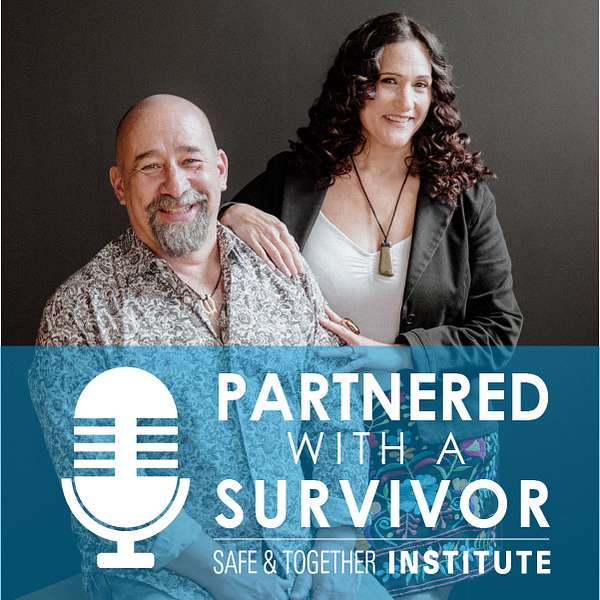
Partnered with a Survivor: David Mandel and Ruth Reymundo Mandel
This podcast is a series of conversations.
What started as a series of intimate conversations between Ruth and David that ranged from personal to professional experiences around violence, relationships, abuse, and system and professional responses which harm, not help, has now become a global conversation about systems and culture change. In many episodes, David and Ruth are joined by a global leader in different areas like child safety, men and masculinity, and, of course, partnering with survivors. Each episode is a deep dive into complex topics like how systems fail domestic abuse survivors and their children, societal views of masculinity and violence, and how intersectionalities such as cultural beliefs, religious beliefs, and unique vulnerabilities impact how we respond to abuse and violence. These far-ranging discussions offer an insider look into how we navigate the world together as professionals, as parents, and as partners. During these podcasts, David and Ruth challenge the notions which keep all of us from moving forward collectively as systems, as cultures, and as families into safety, nurturance, and healing.
We hope you join us.
Have an idea for a podcast? Tell about it here: https://share.hsforms.com/1l329DGB1TH6AFndCFfB7aA3a1w1
Partnered with a Survivor: David Mandel and Ruth Reymundo Mandel
Season 2 Episode 21: Minisode Series on Worker Safety & Well-Being: When workers are targeted by the perpetrator
In this second installment of the multi-part minisode series on worker safety and well-being, Ruth and David explore the important topic of workers being targeted by domestic violence perpetrators. In a few minutes , David & Ruth discuss different ways workers are targeted including:
- Manipulation, intimidation and bullying
- Threats of or actual lawsuits and complaints lodged with managers, professional boards, or courts
- Implied or real threats against family members
- Stalking (online or in real life)
Ruth & David also discuss how misogyny, racism or other forms of discrimination can be factors in the targeting of workers.
David & Ruth finish the brief episode with specific suggestions about basic safety and support strategies that agencies can put in place to respond to the behaviors of perpetrators. These include:
- Explicitly widen out the concept of worker safety to include intimidation, manipulation, not just explicit threats or acts of violence
- Make this wider definition of worker safety a regular part, preventative (not reactive) supervision in cases
- Ensure that staff that handle client complaint or review boards are educated around coercive control and pattern based assessments
- Performance reviews and human resources procedures need to be consider the impact of threats and intimidation on a worker's performance
About the worker safety and well-being minisode series
The goal of the series is to address the critical issues of worker safety and well-being as a critical aspect of domestic violence-informed systems. This is a series for frontline staff across child protection, mental health and addiction, courts and other systems. We hope it will validate their experiences. This is also a series for human resources managers and organizational leadership. Setting policies and procedures to address worker emotional & professional safety in the context of domestic violence cases is essential to creating a domestic violence-informed agency.
Topics in the series include:
- When workers are targeted by the perpetrator of one of the clients
- The connection between worker safety in engaging perpetrators and mother-blaming practice.
- When workers are being targeted by their own perpetrator (through the workplace and at home)
- When workers own experience of abuse are triggered by their work with families
- Managing your own fears, as the worker, about the safety of the family.
Listen to the introduction to the series
Read the Safe & Together Institute’s white paper on worker safety
Take an online course on worker safety related to domestic violence
Check out David Mandel's new book Stop Blaming Mothers and Ignoring Fathers: How to Transform the Way We Keep Children Safe from Domestic Violence.
Visit the Safe & Together Institute website.
Start taking Safe & Together Institute courses.
Check out Safe & Together Institute upcoming events.